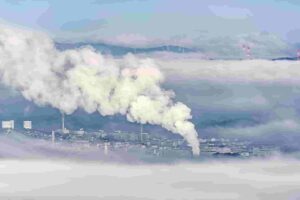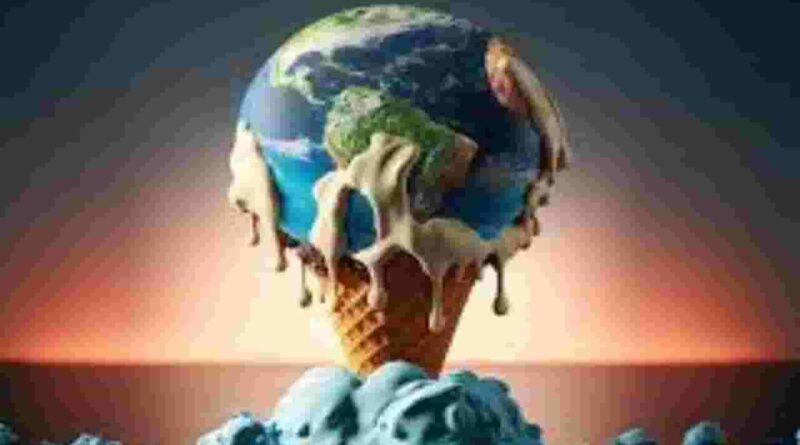Climate Change: Understanding the Crisis and Taking Action
Climate Change: Understanding the Crisis and Taking Action
Climate Change:
Climate Change: Understanding the Crisis and Taking Action
What is Climate Change?
Climate change refers to long-term shifts in average weather patterns that have come to define Earth’s local and global climates. These shifts are primarily driven by human activities, particularly the burning of fossil fuels, deforestation, and agriculture.
Causes of Climate Change:
The primary cause of climate change is the increase in greenhouse gases, such as carbon dioxide, in the atmosphere. These gases trap heat from the sun, leading to an increase in global ( Nasa ) temperatures, known as the greenhouse effect. Human activities, such as burning fossil fuels, deforestation, and agriculture, are the primary sources of increased greenhouse gas emissions.
Impact of Climate Change:
Climate change has far-reaching and often devastating impacts on the planet. Rising temperatures are causing the melting of polar ice caps, leading to rising sea levels and flooding coastal cities. Extreme weather events, such as hurricanes, droughts, and heat waves, are becoming more frequent and intense.
Climate change is also causing changes in the timing and distribution of water, leading to water scarcity in some regions and an increased risk of wildfires. In addition, the changing climate is disrupting ecosystems, altering the ranges and populations of plant and animal species, and altering the functioning of entire ecosystems.
Mitigating Climate Change:
To mitigate the effects of climate change, it is essential to reduce greenhouse gas emissions. This can be done by (Bill Gates) transitioning to renewable energy sources, such as wind and solar power, and improving energy efficiency.
In addition, reforestation and other forms of land management can help remove carbon dioxide from the atmosphere and store it in vegetation and soil. Finally, individual actions, such as reducing personal carbon footprints through lifestyle changes, can help slow the rate of climate change.

Adapting to Climate-Change:
In addition to reducing emissions, it is also important to adapt to the changing climate. This can include measures such as improving infrastructure to better withstand extreme weather events, developing drought-resistant crops, and implementing sustainable water management practices.
Actions at the Community Level:
While government and business action is crucial in addressing climate change, individual actions and community efforts can also make a significant impact. Simple actions such as using public transportation, reducing energy usage at home, and eating a plant-based diet can help reduce personal carbon emissions.
Communities can also come together to support local renewable energy projects, create community gardens, and implement conservation measures such as rainwater harvesting.
International Cooperation:
Addressing climate change requires coordinated efforts at the global level. International agreements, such as the Paris Agreement, have been established to promote cooperation and action among nations in reducing emissions and adapting to the impacts of climate change.
However, these agreements must be adequately funded and effectively implemented to ensure meaningful progress in mitigating climate change.
The Role of Business:
Businesses also have a critical role to play in addressing climate change. Many companies are adopting sustainable practices, such as using renewable energy and reducing waste, to reduce their carbon footprints.
Businesses can invest in and promote new technologies that can help mitigate the effects of climate change, such as carbon capture and storage systems.
The Importance of Education and Awareness:
Education and awareness play a vital role in addressing climate change. By increasing public understanding of the issue and its impacts, individuals can be empowered to make meaningful changes in their lives and communities.
Furthermore, education about climate change can help prepare the next generation to tackle this challenge and promote a sustainable future.
The Economic Costs of Climate Change:
The impacts of climate change are not limited to environmental changes but also have significant economic costs. For example, increased frequency and severity of extreme weather events can lead to damage to infrastructure, loss of crops, and reduced economic productivity.
In addition, sea level rise and increased temperatures can lead to decreased access to fresh water, damage to coastal communities, and loss of valuable coastal ecosystems. The impacts of climate change on the global economy, if not addressed, could be devastating and lead to widespread poverty and economic instability.

The Need for Urgent Action:
The longer we wait to address climate change, the more difficult and expensive it will be to mitigate its impacts. We must take action now to reduce greenhouse gas emissions and transition to a more sustainable future. Delaying action will only make the situation worse, and the longer we wait, the more difficult and costly it will be to reverse the damage that has been done.
The Role of Emerging Technologies:
Emerging technologies have the potential to play a major role in addressing climate change. For example, advances in renewable energy technology can help reduce dependence on fossil fuels and promote a transition to clean energy.
In addition, technological innovations such as electric vehicles and carbon capture and storage can help reduce emissions and mitigate the impacts of climate change. We must continue to invest in and support the development of these technologies to help address the crisis of climate change.
Climate Change Effects
climate change examples
Climate change refers to long-term changes in Earth’s climate, including average temperature, precipitation, and wind patterns. Some examples of the effects of climate change include:
Rising global temperatures lead to the melting of polar ice caps, rising sea levels, and more frequent and intense heat waves.
Changes in precipitation patterns, such as droughts, heavy rainfall, and flooding in some areas, and decreased rainfall in others.
Increased frequency and intensity of extreme weather events such as hurricanes, tornadoes, and wildfires.
Disruptions to ecosystems and the loss of biodiversity, including the death of coral reefs and the migration of plant and animal species to cooler areas.
Acidification of the oceans is damaging marine life and affecting food chains.
Impacts on human health, include the spread of diseases, heat stress, and decreased air quality due to increased pollution and wildfires.
Changes in agricultural production and food security, with some regions experiencing reduced crop yields and increased pest infestations, and others facing water scarcity for irrigation.
Impacts on infrastructure, such as roads, bridges, and buildings, due to increased flooding, heavy rainfall, and erosion.
Disruptions to tourism and recreation, as some popular destinations become less attractive due to changing climates and rising sea levels.
Increased risk of water-borne diseases, such as cholera, due to more frequent flooding and contaminated water sources.
Displacement of people, particularly in coastal regions and areas prone to natural disasters, leads to increased migration and social conflict.
Impacts on energy systems, such as changes in temperature and precipitation patterns, affect hydropower production, and the increased frequency of extreme weather events damages energy infrastructure.
Changes in ocean currents and circulation patterns, lead to alterations in oceanic ecosystems and alter the distribution of marine life.
Declining Arctic sea ice leads to impacts on indigenous communities and wildlife, as well as the release of methane from thawing permafrost.
Increased frequency and severity of ocean “dead zones” where low oxygen levels create inhospitable conditions for marine life.
Increased risk of forest fires due to drier conditions and longer fire seasons.
Shifting migration patterns of bird species, insects, and other animals, lead to changes in the distribution and abundance of many species.
Warming oceans lead to the bleaching of coral reefs and the death of important habitats for many marine species.
Decreased snow cover and changes to snowmelt patterns, affect water supplies for agriculture, energy production, and human consumption.
These impacts illustrate the far-reaching and complex nature of climate change and the urgent need for effective action to reduce greenhouse gas emissions and adapt to its impacts.
Effects of Climate Change
What are the effects of climate change?
Climate change can have a range of negative effects, including:
1) Rising global temperatures, lead to more frequent and intense heatwaves, droughts, and extreme weather events.
2) Rising sea levels, cause coastal flooding, erosion, and damage to infrastructure.
3) Changes in precipitation patterns, resulting in increased water scarcity in some regions and more intense flooding in others.
4) Changes in ecosystems and biodiversity, with some species unable to adapt to new conditions, leading to declines in biodiversity and loss of important ecosystem services.
5) Impacts on human health, including increased incidence of heat-related illness, respiratory problems, and the spread of disease through insects and pests.
6) Negative impacts on agriculture and food security, including crop failures and reduced yields due to heat stress, drought, and flooding.
7) Displacement and migration of people, particularly in coastal and low-lying areas, due to rising sea levels and more intense natural disasters.
8) Increased frequency and intensity of natural disasters such as hurricanes, wildfires, and typhoons.
9) Changes in the timing and duration of seasonal events, such as the flowering of plants, migration of animals, and the timing of peak runoff, affect the entire food chain.
10) Ocean acidification, can have damaging impacts on marine life and the fishing industry.
11) Thawing of permafrost, leading to the release of large amounts of methane, a potent greenhouse gas, and the destabilization of permafrost-dependent infrastructure.
12) Impacts on mental health and well-being, including stress and anxiety due to the effects of climate change on communities and the environment.
13) Insecurity and conflicts over declining resources, such as water and food, particularly in regions that are already facing resource scarcity and political instability.
14) Economic impacts, including increased costs for governments, businesses, and individuals, due to damage from extreme weather events, declining agricultural productivity, and the need for adaptation measures.
15) Changes in the frequency and distribution of disease-carrying insects and pests, leading to the spread of diseases to new regions and the emergence of new diseases.
16) Impacts on infrastructure, including damage to roads, bridges, and buildings due to rising sea levels, flooding, and extreme weather events.
17) Loss of cultural heritage and historical sites due to sea-level rise, coastal erosion, and more intense natural disasters.
18) Impacts on energy systems, including increased demand for air conditioning and cooling, as well as reduced generation from hydroelectric and thermal power plants due to changing water levels and availability.
19) Impacts on tourism, including declining visitor numbers to coastal and mountain resorts due to rising temperatures, changing precipitation patterns, and declining snow cover.
20)Impacts on indigenous communities, including loss of traditional hunting and fishing grounds, displacement from ancestral lands, and declining cultural practices.
21)Impacts on international relations, as countries compete for resources and work together to address shared environmental challenges, such as the loss of Arctic sea ice and the degradation of shared ecosystems.
Climate Change Importance
Why is climate change important
Climate change is important because it is having a profound and widespread impact on our planet and its ecosystems. The warming of the earth’s atmosphere is causing rising sea levels, more frequent and severe weather events, and harm to numerous species of plants and animals.
It is affecting human communities, particularly those in low-lying and coastal areas, as well as those that rely on agriculture and fisheries. Climate change also poses long-term risks to human health, security, and economic prosperity, making it a critical issue that must be addressed promptly and effectively.
Climate change is one of the most pressing global challenges of our time, with the potential to reshape the planet and disrupt the natural systems that sustain life. The main cause of climate change is the emission of greenhouse gases, primarily carbon dioxide, which trap heat in the earth’s atmosphere and cause the planet to warm.
This warming has consequences that include melting glaciers and ice caps, altering weather patterns, and increasing the frequency and intensity of extreme weather events such as heat waves, droughts, hurricanes, and wildfires.
Moreover, climate change can cause ocean acidification, which makes it difficult for marine species to form and maintain their shells, skeletons, and other hard structures, threatening entire ecosystems and the services they provide to humans, such as food, recreation, and coastal protection.
Climate change also exacerbates existing social and economic inequalities, as those who are already vulnerable to poverty, conflict, and disease, are more likely to suffer the worst impacts.
Therefore, addressing climate change is vital for protecting the environment, promoting sustainable development, and safeguarding human well-being. This requires reducing emissions of greenhouse gases, increasing resilience to the impacts of climate change, and transitioning to a low-carbon, sustainable economy.




